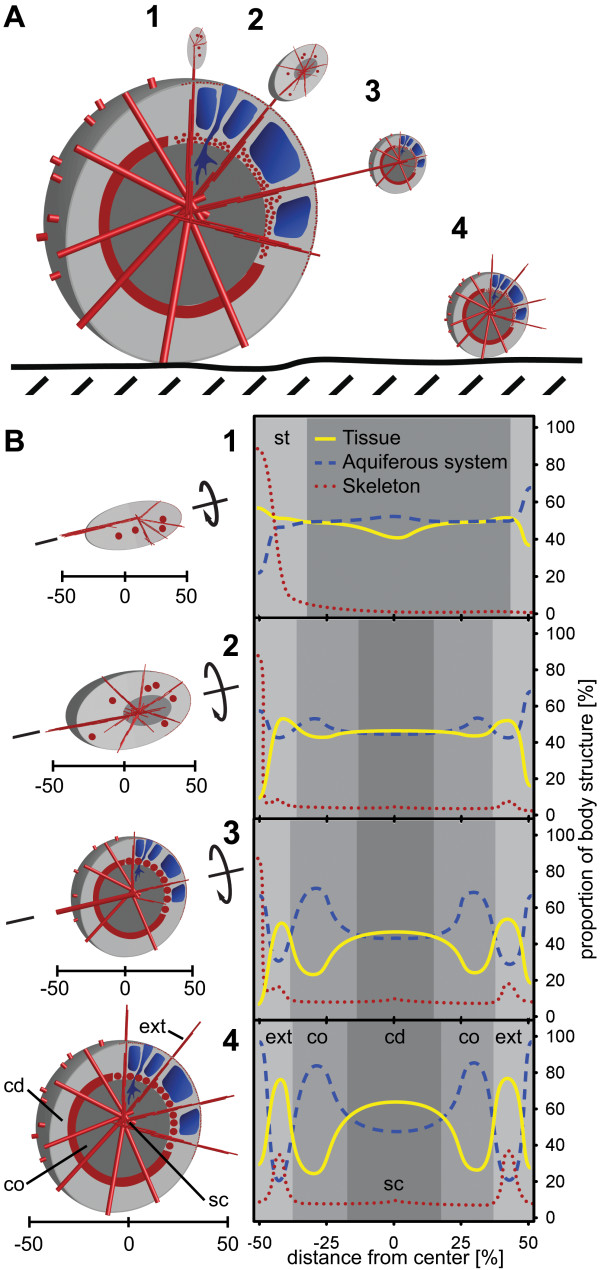Figure 6.
Scheme of bud development in T. wilhelma. (A) Four bud stages are characteristic, with the first three connected to the mother sponge by a stalk: Skeletal elements in red (megasclere bundles and aster spheres); megasclere bundles partly simplified as cylinders; Tissue in grey, separated into cortex (light grey) and choanoderm (dark grey). (B) Details of bud stages (left) and schematic graphs of morphological functional unit distribution. There are indications of rotational symmetry along the initial connecting stalk (st) in stages one to three (compare Additional file 4). Stage 4 buds display an adult-like body morphology with point symmetry to the skeleton centre (sc; see Additional file 5). Choanoderm development starts in stage 2, accompanied by the development of the megaster spheres in stage 3. Differentiation into a cortex (co) and choanoderm (cd) is characterized by the development of the aquiferous system (larger canals in stage 2; lacunae in stage 3). Body extensions (ext) (filaments) are found in stage 4 buds. For further details see text.

